Pharmacodynamics
1/32
There's no tags or description
Looks like no tags are added yet.
Name | Mastery | Learn | Test | Matching | Spaced |
|---|
No study sessions yet.
33 Terms
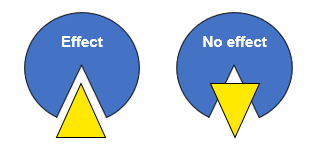
Pharmacodynamics is ..
How a drug acts on the body after administration to the exert its effect
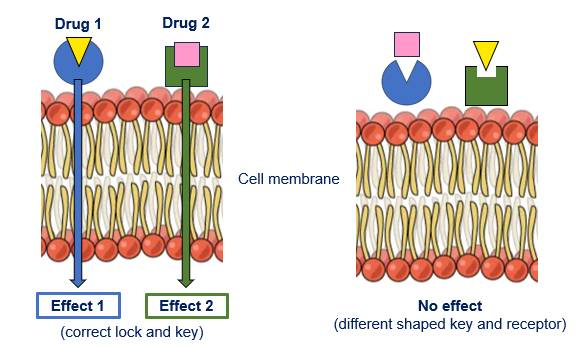
Drug molecules have specific shapes that enable them to combine with specific receptors on the surface of the cell membrane to produce an effect. This means that the drug molecule must be ..
The same shape as the drug receptor to ‘fit’ and therefore produce an effect
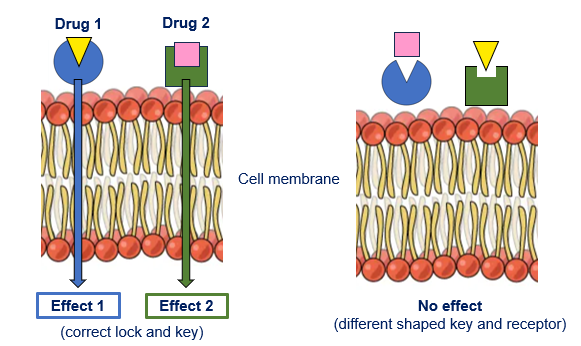
Multiple types of receptors will be found on a cell’s surface, these are capable of ..
Combining with different drug molecules and producing a different cell response
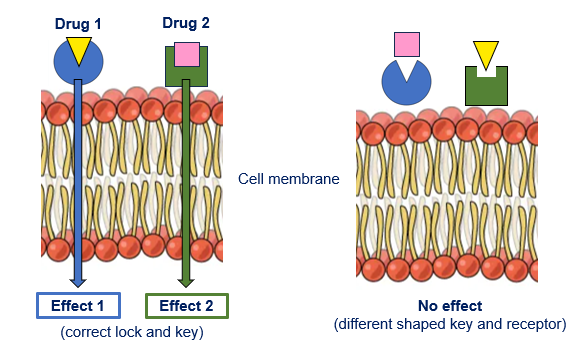
A single organ or tissue typically has multiple different receptors, with each producing ..
A different cellular effect when stimulated by a drug
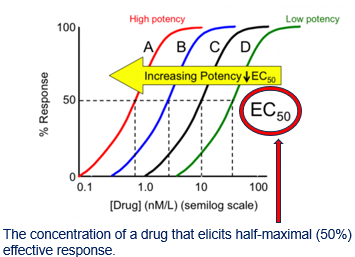
Affinity
The ability of a drug to bind or fit with a receptor
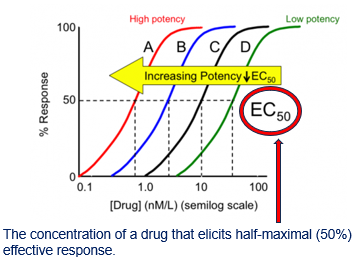
Efficacy
The ability of a drug to produce an effect/response once bound to a receptor (this may also be referred to as ‘intrinsic activity’
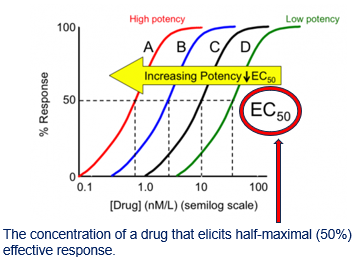
Potency
The amount of drug required to produce a given effect
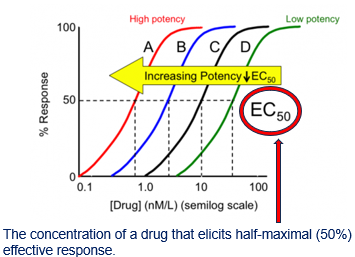
The higher the affinity ..
The more likely to bind and stay bound to a receptor
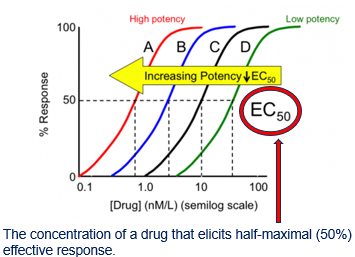
Drugs with a high potency require smaller dosing to achieve a given effect in contrast to drugs with a ..
Low potency which require a larger dosing to achieve the same effect
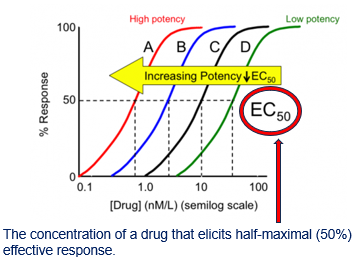
The potency of a drug is expressed as the half-maximal effect concentrations which refers to the contractions of a drug that produces a response that is halfway between the ..
Baseline and Maximum
EC50
The concentration of a drug that elicits half-maximal (50%) effective response
ED50
The concentration that elicits a therapeutic effect in 50% of the population
Example of Efficacy
An antibiotic with good efficacy would work to inhibit or destroy bacterial cells (what the drug is supposed to do) an analgesic drug with good efficacy would work to reduce pain
Agonist
A drug with both affinity and efficacy
Antagonist
A drug with affinity but not efficacy
Endogenous chemical/agonist
A naturally occurring substance within the body that binds to and activates a specific receptor, resulting in a physiological response.
An agonist drug is a chemical that resembles an ..
Endogenous agonist to elicit a simile response
Both agonists and antagonists can have a high/strong affinity for a receptor. The difference is the ..
Efficacy/response they produce once bound to a receptor
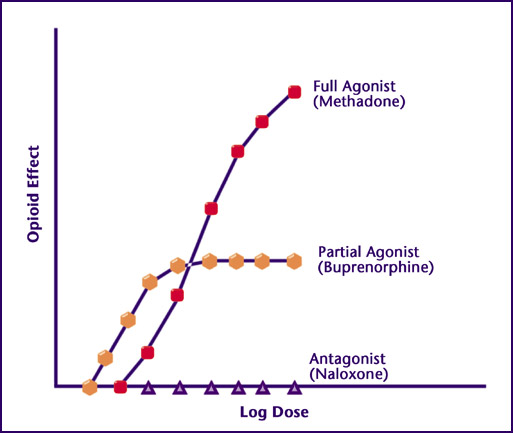
Full agonist
Typically produces the maximal response (high efficacy)
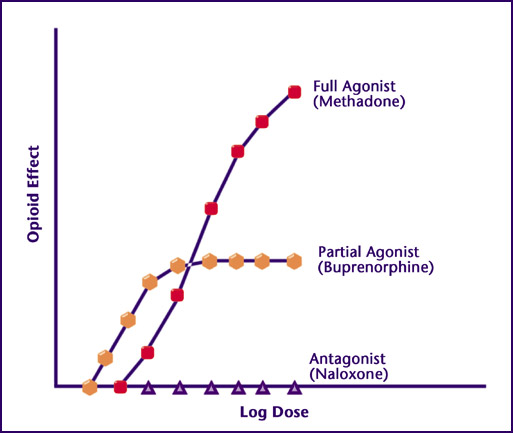
Partial agonist
Produces a submaximal response (weaker efficacy). Unable to produce a maximal response, even when all receptors are occupied (ceiling effect).
Once the maximal response a partial agonist has been reached ..
No further effect will occur with increasing dose - this is known as the ceiling effect and its efficacy plateaus
Competitive antagonists are known as ..
Reversible or surmountable antagonists
Non-competitive antagonists are known as ..
Irreversible or unsurmountable antagonists
The non-competitive antagonist will not displace the agonist molecule, but it will block it by attaching to a ..
Different binding site
Non-competitive antagonists are not truly irreversible as ..
The reversal does eventually occur, very slowly
How does binding cause a response?
Ligand-gated and voltage-gated ion channels
Receptors on protein channels (G-protein or Kinase)
Intracellular receptors
Ion channels open or close in response to ..
Ligand (or drug molecule) receptor interactions
Drugs that use the ion channels to cause a response include the local anaesthetics. Local anaesthetics prevent the transmission of the nerve impulse by ..
Blocking the sodium channel to prevent the influx of transmission of a nerve impulse. The drugs act locally, at the site of administration, so the effect produced is local rather than systemic.
Local anaesthetics are sodium channel blockers ..
Will block the transmission of a nerve impulse
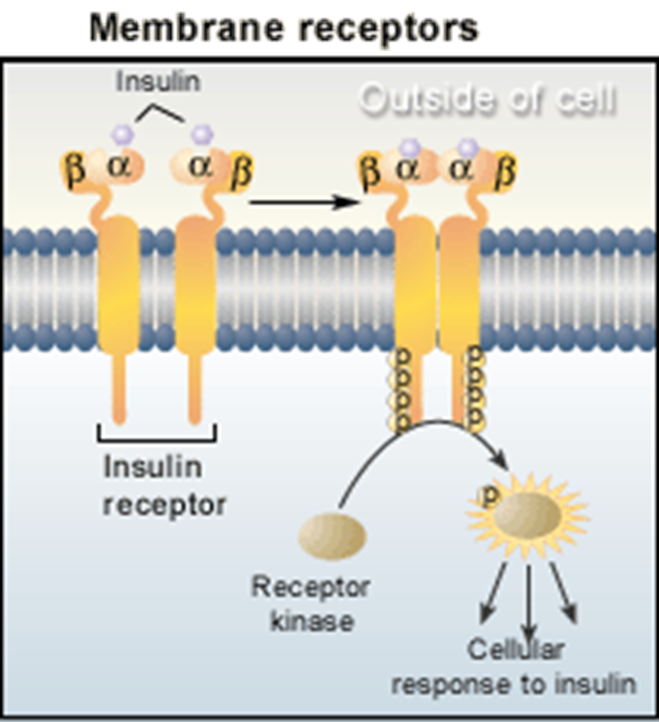
G Protein-coupled receptors and Protein kinase receptors
Binding to these receptors from outside the cell leads to a chain reaction within the cell
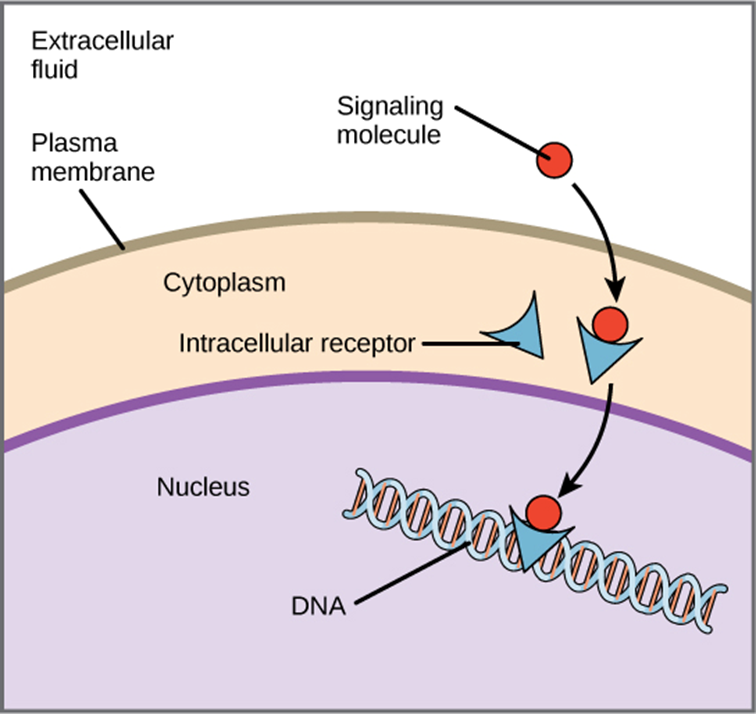
Intracellular receptors
These receptors are entirely intracellular
The ligand (drug) must diffuse into the cell → lipophilic drugs
E.g. Thyroxine, levothyroxine
Signalling molecule
Drug molecule
Intracellular receptors - The drug will bind to receptor in the cytoplasm, then travel into the nucleus, then attach to the DNA molecules which cause, or interrupt ..
Transcription which is how these drug exert their effects